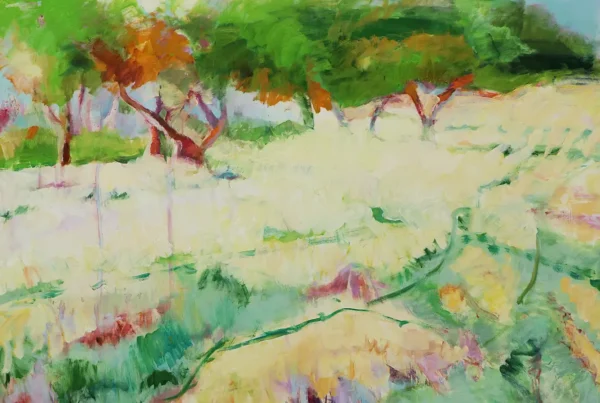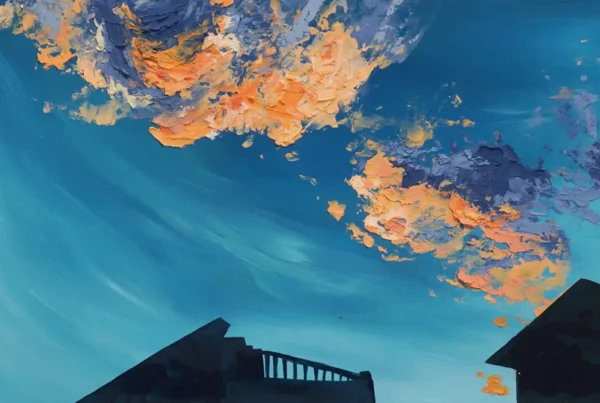Yifan Zhang: Bridging Time and Culture Through Art
Yifan Zhang’s artwork exists at the intersection of East and West, past and present, ancient and contemporary. His latest collection, titled “Restoring Ancient Ways,” demonstrates a masterful balance of influences from Ancient Greece and his own Chinese heritage. Through his distinct fusion of these seemingly disparate worlds, Zhang captivates both art critics and collectors alike. The pieces in this collection do more than merely reference historical styles; they delve into the deeper cultural and temporal connections that shape our modern understanding of beauty and artistry.
Born and raised in Zhejiang Province, China, Yifan Zhang’s artistic foundation was influenced heavily by his parents, who were both accomplished artists. This early exposure to Chinese painting laid the groundwork for his creative journey. Later, he ventured into Western oil painting, honing his technical skills at university, where he embraced Renaissance influences. Over time, Zhang has blended these different traditions into a style that feels both timeless and innovative, rooted in a respect for classical techniques while remaining distinctly modern. This cross-cultural dialogue is a defining characteristic of his work, setting him apart in the contemporary art world.
“Restoring Ancient Ways” reflects Zhang’s ongoing fascination with the past and its impact on contemporary aesthetics. By drawing on historical periods such as the Victorian era, Dadaism, and the Middle Ages, he creates works that challenge viewers to consider the evolving nature of what we define as “retro.” These references aren’t mere nostalgic gestures but instead serve as a foundation upon which Zhang builds a modern narrative. Through these visual connections, Zhang reminds us that the past is never truly past—it continuously informs and reshapes our present.
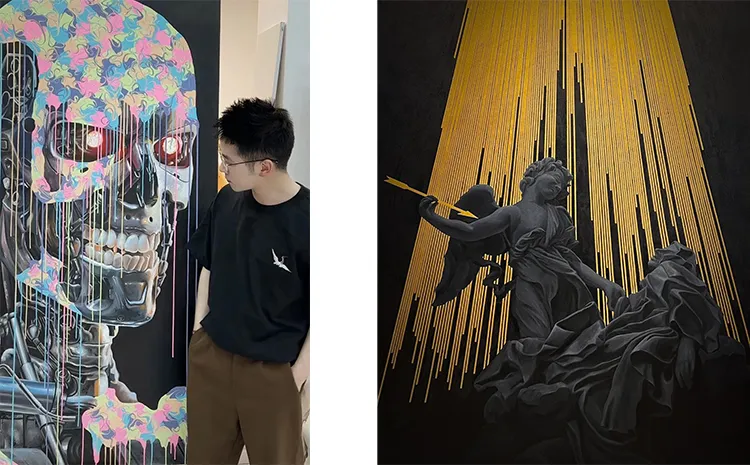
Yifan Zhang: A Journey of Artistic Conflict and Harmony
Conflict, for Yifan Zhang, is not something to be resolved but rather explored. His series, “Fault Art,” encapsulates this idea by examining the tension between Eastern and Western cultures. Zhang’s art is not merely about blending styles; it is a deliberate juxtaposition of opposing perspectives, ideas, and traditions. This thematic conflict is present in both the visual elements of his work and in the underlying messages they convey. Through this tension, Zhang invites his audience to engage with the complexity of cultural identity in a globalized world.
“Fault Art” is deeply personal for Zhang, reflecting his own experiences as an artist influenced by both Eastern philosophy and Western art history. His aim is not to harmonize these influences but to allow them to clash, creating a space for interpretation and reflection. The tension between these cultural forces is mirrored in the viewer’s experience of the work, as each person brings their own understanding and background to the piece. For Zhang, this dialogue between the artwork and the viewer is essential; it transforms the act of looking into an active process of meaning-making.
Zhang’s ability to infuse his work with this sense of conflict while maintaining a cohesive visual language speaks to his mastery as an artist. His use of stark contrasts—both in terms of cultural symbols and artistic techniques—challenges the viewer to rethink preconceived notions of beauty and tradition. This approach not only highlights the differences between Eastern and Western art but also emphasizes the potential for these differences to enrich one another, creating a more nuanced and multifaceted artistic experience.
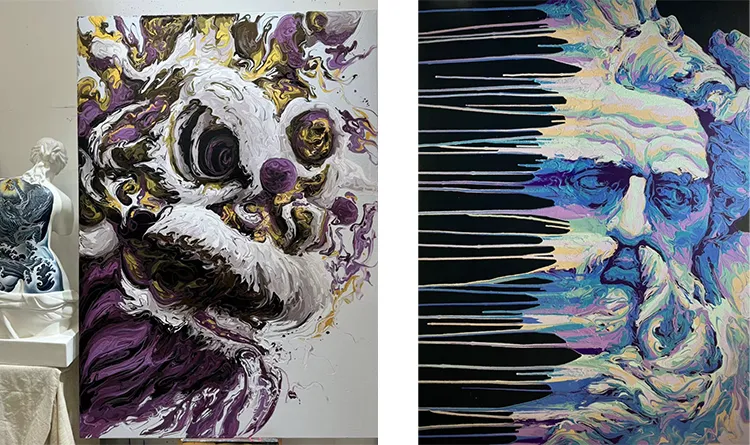
Golden Reverence: The Divine in Zhang’s Work
Yifan Zhang’s use of gold streaks has become a signature element in his artwork, symbolizing the divine and the eternal. His process, which involves layering gold paint beneath the surface of the canvas and revealing it through a dramatic unveiling, adds a performative aspect to his work. The gold streaks emerge from the paintings like a revelation, imbuing the figures he depicts—often inspired by classical statues and religious iconography—with a sense of spiritual transcendence. This process mirrors Zhang’s broader artistic mission: to reveal the hidden depths beneath the surface of cultural and historical narratives.
Gold, in Zhang’s work, is not just an aesthetic choice but a symbolic one, carrying weight in both Eastern and Western traditions. In the East, gold is often associated with prosperity and spiritual enlightenment, while in the West, it frequently represents divinity and power. By incorporating this material into his paintings, Zhang draws upon these diverse associations, creating a dialogue between the cultural meanings of gold. The result is a visual metaphor for the synthesis of different cultural traditions, where the sacred and the material coexist in a single, unified form.
The reveal process itself adds an element of surprise to Zhang’s work, both for the artist and the viewer. Sometimes, Zhang peels the tape away from the canvas in a swift, deliberate motion, while at other times, he sets the tape on fire, allowing flames to briefly animate the figures before settling into their final form. This performative act highlights the transformative power of art—how something seemingly ordinary, like a strip of tape, can give way to something extraordinary. For Zhang, this process mirrors the act of creation itself: a journey from the mundane to the divine, where the artist’s hand guides the viewer toward a deeper understanding of the work.
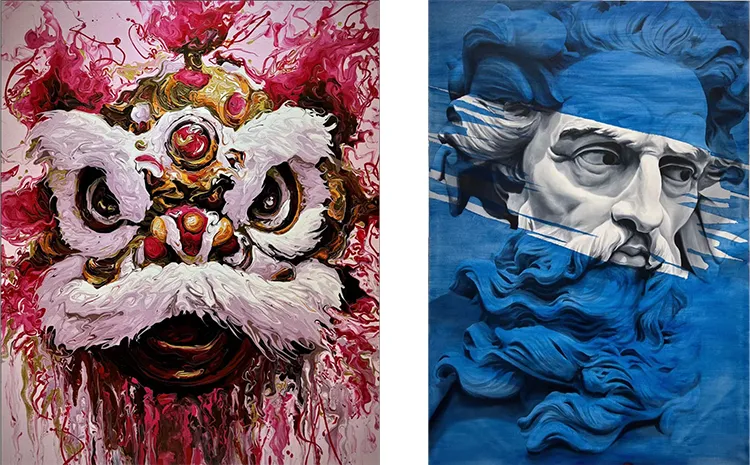
Yifan Zhang: The Art of Transformation and Continuity
Looking ahead, Yifan Zhang continues to push the boundaries of his art, always seeking new ways to explore the conflicts and contrasts that define his work. His future plans include creating larger compositions that allow for more dynamic interactions between light, shadow, and the symbolic gold elements that have become a hallmark of his style. Zhang is also interested in incorporating new materials into his work, potentially introducing even more layers of complexity to his process and deepening the viewer’s engagement with the art.
Zhang’s fascination with the interplay between time and culture remains a central theme in his evolving body of work. He sees art as a way to bridge the gap between different eras and traditions, using visual storytelling to bring past and present into conversation. Whether through the use of ancient symbols or the exploration of modern conflicts, Zhang’s work continues to challenge the boundaries of artistic expression, urging viewers to reconsider their own place within the broader cultural landscape.
In many ways, Zhang’s art is a reflection of his own journey as an artist—one marked by constant growth, exploration, and a deepening understanding of the world around him. As he continues to develop his practice, Zhang remains committed to creating work that not only engages with historical and cultural narratives but also transforms them. His art is a testament to the power of transformation, both in the creative process and in the way art can reshape our understanding of the world.





